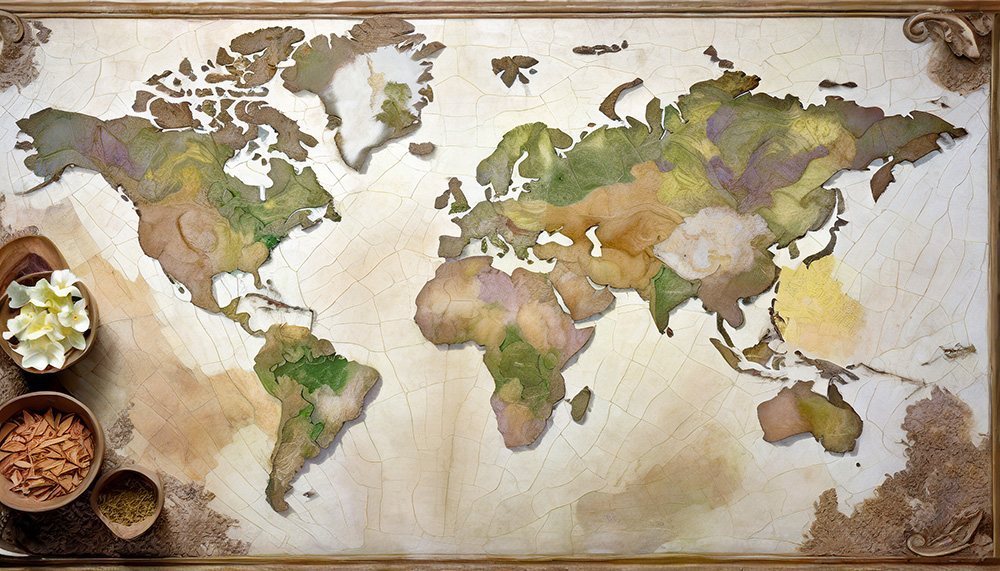
Learn how ingredients like sandalwood, frankincense, and vanilla have shaped cultures, influenced traditional medicine, and contributed to economies.
Asia
- Sandalwood: Originating in India, sandalwood has been vital in religious rituals and for carving artifacts. Its oil is widely used in perfumery and traditional medicine.
- Agarwood: Particularly valued in the Middle East and Southeast Asia, agarwood is used for high-quality incense and perfumes. It’s often cited in Islamic texts and is expensive due to its rarity.
- Camphor: Native to parts of Asia like Japan and Taiwan, it’s been a critical component in traditional medicine, as well as religious ceremonies.
Middle East
- Frankincense: Native to the Arabian Peninsula, this resin has been crucial in religious contexts, particularly in Christianity and ancient Egyptian rites.
- Myrrh: Often used in tandem with frankincense, myrrh has applications in religious rituals and traditional medicine.
- Saffron: Although originally from Greece, saffron became very significant in the Middle East. It’s used for culinary purposes, traditional medicine, and as a dye.
Africa
- Gum Arabic: Sourced primarily from Sudan, this resin is used in food processing, traditional medicine, and inks.
- Ylang-Ylang: Native to the rainforests of the Indian Ocean islands but also found in parts of Africa, it’s primarily used in perfumery and aromatherapy.
Europe
- Lavender: Native to the Mediterranean, it’s widely used in perfumery, cosmetics, and herbal medicine.
- Rosemary: Also from the Mediterranean, rosemary is largely used in cooking but also has applications in traditional medicine.
- Thyme: Significant in Mediterranean and European cooking, as well as in herbal medicine.
Americas
- Vanilla: Indigenous to Mexico, vanilla has a long history of being used in food and perfumes.
- Tobacco: Native to the Americas, tobacco had traditional and ceremonial uses before becoming a major economic crop.
- Pine Resin: Native to North America, it has been used for waterproofing, adhesives, and traditional medicine.
Oceania
- Tea Tree Oil: Native to Australia, it’s widely used for its antiseptic properties.
- Eucalyptus: Also native to Australia, eucalyptus oil is used in medicinal applications like cough drops and balms.
Each of these aromatics has played a significant role in shaping the cultural, medicinal, and economic facets of their respective regions.

